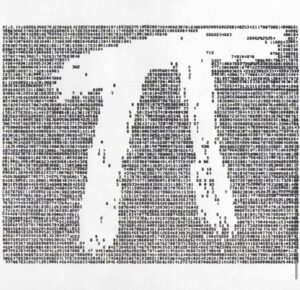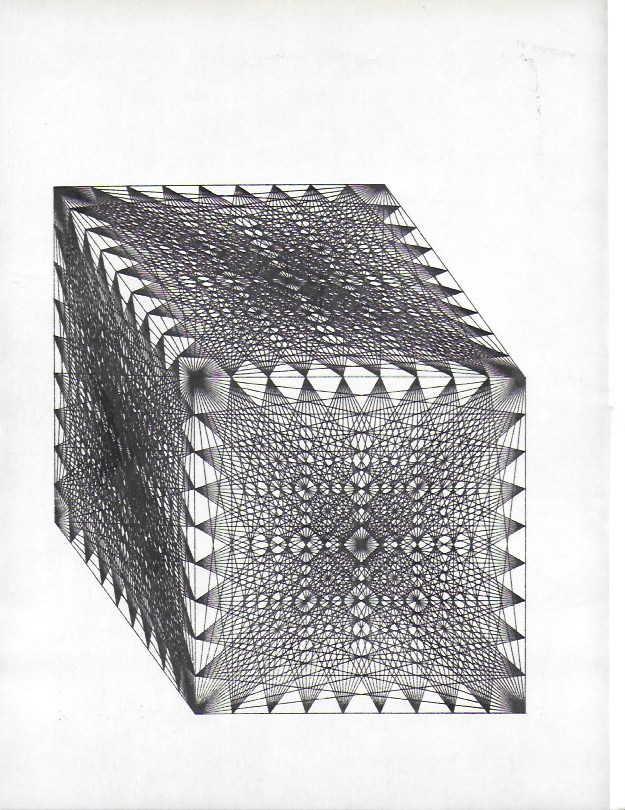
Jean-François Colonna (1950- )
untitled
c. 1970
computer graphic on paper
21 x 27 cm
______________________________________________________________________________________________________________
In 1971, this engineer at the Ecole Nationale Supérieure des Télécommunications was responsible for introducing computer technology into the school’s audiovisual teaching program. He quickly turned his attention to computer-aided artistic creation and animation. He experimented with depth effects, created paradoxical geometries, digitized video images to which he applied graphic modifications, with machines having no operating system, language or applications: he designed a three-dimensional graphic language in assembly language, the lowest level of programming machine (with commands occupying a single kilobyte) for what he called his SMC system, Multimedia Conversational System. He worked in the laboratory of the Château de La Martinière in Saclay on a T-1600 computer manufactured by the French company Télémécanique in Grenoble. During these years, he participated in French Art et Informatique exhibitions alongside Vera Molnar, Manfred Mohr and GAIV artists. Herbert Franke published an article about his work in 1978, “Computergrafik-Galerie: Jean-François Colonna” (Angewandte Informatik, 9/1978, pp. 413-415). He exhibited at the landmark art and science exhibition Electra, held at the Musée d’Art Moderne in Paris in 1983.
When his laboratory moved to the Ecole Polytechnique, he became part of the Centre de Mathématiques Appliquées, where he wrote his doctoral thesis. His work evolved into pioneering research in computational visualization of mathematical and physical objects and their eventual experimentation. For this he was equipped with supercomputers. He exhibited at SIGGRAPH in 1985 and was featured on the cover of the final SIGGRAPH program in 1993 with his computer representation of a mathematical surface discovered by French artist Patrice Jeener, known as the Jeener surface or minimal surface (i.e., whose area is minimal for a given edge or contour). In 1986, he was awarded the Osaka Governor’s Grand Prize for the first tridimensional visualization of the Mandelbrot set. He published his work in Leonardo at the request of Frank Popper. During this period, he also worked on the first French film using digital images, Terminus (1987), starring French icon Johnny Hallyday. He collaborated on projects with the artists Roberto Matta and Iannis Xenakis. From 2000 to 2002, he shaped the visual identity of the façade of the Cité des Sciences de Paris with his Lorenz attractor, a computer visualization of the fractal structure that corresponds to the long-term behavior of simplified fluid mechanic meteorological models. As a pioneer of visual research in mathematics, he explores the limits of his tools, posing the interesting question: in what sense does art advance mathematics?
